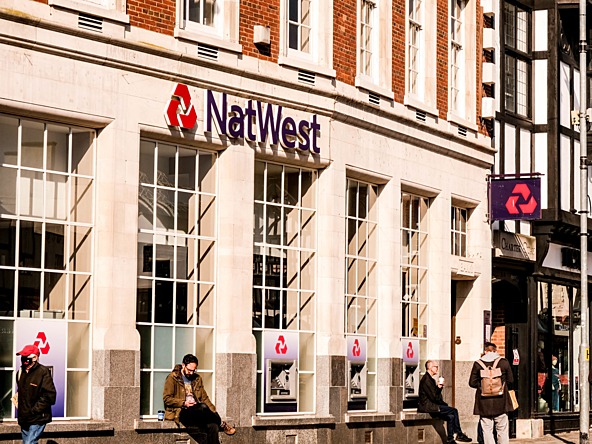Banking on consumers: Is a ‘perfect 10’ the bane of your life?

The polarising experiences and emotions that exist during the life cycle with one’s bank can be complex. In a very short space of time, a customer can go from the extremes of a very low risk transfer of £15 when out for dinner with friends, to making a critical risk-ridden decision of which mortgage to choose. Their simple transfer needs to be extremely quick and easy – that’s no longer a nice-to-have – and ideally through a digital channel. The mortgage purchase, however, will quite possibly need an adviser – most customers feel they need to speak to a person when large amounts are involved and there’s a lot at stake. In summary, measuring these varying experiences means that the net promoter score (NPS) can often bring challenges.
An ongoing conundrum for research professionals is properly understanding the vast number of passives – those scoring a seven or an eight. The scale of the challenge is significant; for major high street banks this could equate to millions of customers. At the heart of this dynamic is a simple truism; we’re not doing anything wrong, we just haven’t wow’d them (yet). In addition, many customers hovering near the middle of the scale simply don’t recommend banks, for no other reason than they don’t feel the need to share their experiences. It’s just not something they talk about with friends and family.
When we take a step back and look at the different needs of our customers, it’s not surprising that we have a wide spread across the NPS scale. With varying degrees of expectations, one customer’s perfect 10 is another customer’s seven or eight, so we simply can’t get it right for everyone all of the time. As an example, our under-35 audience have multiple financial service apps on their home screen – as well as the likes of Amazon and Deliveroo – all competing against each other. Their expectations are high. Many also have complex needs, and they walk into branches and pick up the phone to us more than you might think. These complex needs require conversations and this group critically evaluate how helpful and friendly our colleagues are. In short, they don’t pull any punches when it comes to their evaluation of our service.
Then we have our over-55 customers, who are not homogeneous either. Some of this group have jumped on board the digital train but are perhaps not overly confident, so rely on human interaction for reassurance. Although many high street banks have a digital first strategy, it’s not as easy as “once they’re onboarded, off they go”. Safety and security is very much top of their mind and as a result their go-to is online banking rather than mobile – and many simply don’t have the need to bank on the go.
Alongside the digital converts, many over-55s are branch die-hards. To this group, it makes no sense that you would bank digitally, either from a security or relationships perspective – these digital resistors need a great branch experience. They are not very tolerant of queuing, though, so don’t further annoy them by asking “did you know you could have done that digitally?”. The answer will likely be “yes, but I just wanted to speak to someone”. As an industry, we should remember that this isn’t an unreasonable ask.
Sometimes large corporate structures makes this hard for us to “connect first”, given pressure on strategic activity such as reducing call times, cutting costs, climate targets, digital adoption targets. However, if we don’t invest the time to connect, customers may not care about the flashy new app feature. If they know we care, then they are likely to be much more receptive to hear about improvements or be educated. I feel this element of connection is ever more important now given we are in the early stages of a cost-of-living crisis.
We really need to listen to customers more, and ultimately ask ourselves some really tough questions. Do we provide enough practical and emotional support when customers are in financial difficulty? Do we feel we ‘did our bit’ during the pandemic and some now feel we can take our foot off the gas? Are we empathetic enough when a customer calls their bank to report fraud with the same emotion and urgency as when calling 999? Are we supportive enough if a customer is getting frustrated when trying to remember the multiple passwords needed for online banking? Let’s not mention card readers.
If we take the time to think about these questions, and assess what our customers are actually thinking, feeling and doing, then we’ll naturally have the ammunition to create more promoters. However, we need to challenge ourselves, delve into the evidence and turn our insight into customer focused action, not just cross our fingers and hope that next month’s data will give us more promoters. That is not being truly customer-centric.
As an insight team at NatWest, we spend time digging through the data to establish why customers are selecting a certain score, and specifically understanding how we can move passives to promoters. That’s a big part of what we do, and we have a robust internal NPS system to support us in doing that. However, despite a whole host of NPS targets set within the business, we’ve attempted to move away from a culture of chasing scores. The philosophy of our NPS system is to embed a culture of listening, learning and acting on customer feedback, and we constantly strive to be customer-centric in the way we analyse our data. In doing so, we have enabled people at all levels of the bank to make meaningful interventions to processes, and more broadly we make sure the correct customer sentiment gets into the hands of the right people, so positive changes to the experience can be made.
Is that elusive 10 is a walk in the park? It absolutely isn’t. It’s complex to untangle – differing expectations, emotions, experiences and life stages all mixed together give high street banks a very difficult challenge. Spoiler alert: a show-me-you-know-me approach, combined with consistent great service at moments of truth, effortless everyday banking, clarity of communication and follow through will win the day. That’s the least that our customers deserve once they’ve given us the privilege of looking after their money for them. Here’s to more 10s. Actually, scrap that – here’s to happier customers.
Emma Duguid is customer insight lead, retail, at NatWest Group

We hope you enjoyed this article.
Research Live is published by MRS.
The Market Research Society (MRS) exists to promote and protect the research sector, showcasing how research delivers impact for businesses and government.
Members of MRS enjoy many benefits including tailoured policy guidance, discounts on training and conferences, and access to member-only content.
For example, there's an archive of winning case studies from over a decade of MRS Awards.
Find out more about the benefits of joining MRS here.











0 Comments